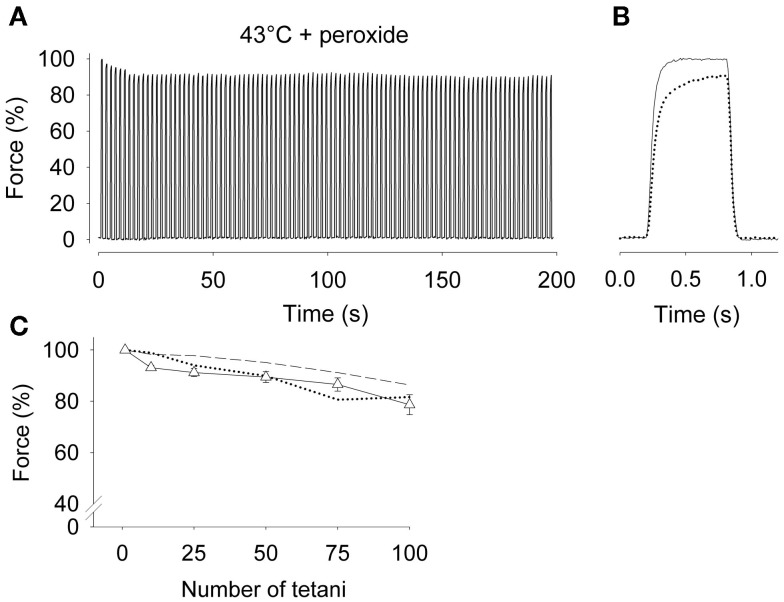Figure 1.
Tetanic force was well maintained in intact soleus fibers during fatiguing stimulation at 43°C in the presence of peroxide. (A) Typical continuous force records from a soleus fiber fatigued by 100 Hz, 600-ms tetanic contractions repeated every 2 s at 43°C in the presence of 10 μM hydrogen peroxide. Force is expressed relative to the first tetanus, which was set to 100%. (B) Superimposed force records on an expanded time axis from the first (solid) and last (dotted line) tetani of the fatigue run. (C) Mean data (±SEM) of relative force measured during the 1st, 10th, 25th, 50th, 75th, and 100th fatiguing tetani at 43°C in the presence of 10 μM hydrogen peroxide (Δ, n = 9). For comparison, mean data from soleus fibers fatigued at 37°C (dashed line) and 43°C (dotted line) in the absence of peroxide are also shown. Fatigue in fast-twitch fibers was unaffected by elevated temperature. Contractile force in rested fibers was unaffected by 5 min of 10 μM hydrogen peroxide exposure, i.e., 100% force did not differ between groups. Data are from Place et al. (2009).

